Top 10 Best Proposal Software and Tools for 2025: Features, Pricing & more
In this blog, we’ll look at how the right proposal software can change the way your team works, saving you time,
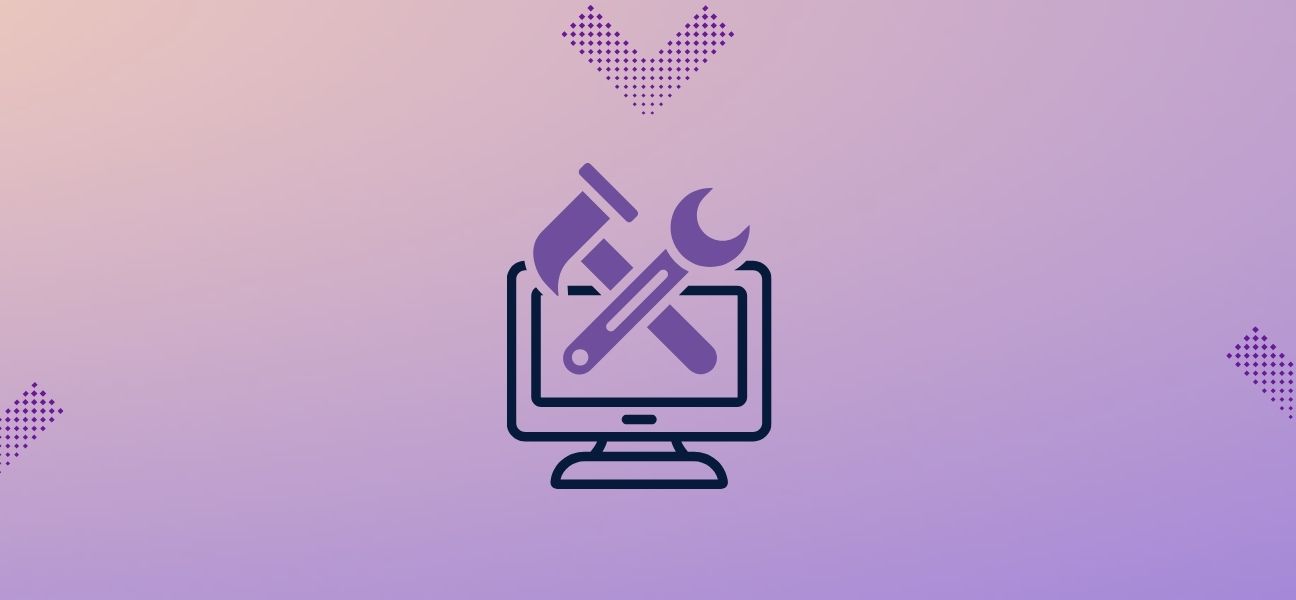
Have you ever seen your proposal team rush to put everything together at the last minute, searching for the right content, formatting documents, and hoping to hit that tight deadline? If this sounds familiar, you’re definitely not alone. In fact, recent data reveal that the average time spent on writing a single RFP response is about 25 hours, down from 30 hours just last year.
That’s a lot of time spent on tasks that take away from what your team should really be focusing on: getting better proposals out faster and securing new business.
In this blog, we’ll look at how the right proposal software can change the way your team works, saving you time, improving the quality of your responses, and ultimately helping you win more deals. We’ll also walk you through the top 10 tools for 2025, guide you on how to choose the best fit for your needs, and show you how Inventive AI can make a big difference.
Key Takeaways
- Proposal Software Saves Time: Tools like Inventive AI cut proposal drafting time by up to 90%, so your team can focus on strategy and client engagement.
- Improve Proposal Quality: Centralized content, AI-powered insights, and templates ensure proposals are consistent, accurate, and on-brand.
- Collaboration Made Easy: Proposal software brings your team together in one platform, eliminating bottlenecks and speeding up the review process.
- Track Engagement: With built-in analytics, you can track how prospects engage with your proposals and optimize follow-up strategies.
- Boost Win Rates: Teams using AI-powered proposal software see 50% higher win rates and faster, smarter submissions.
What is Proposal Software?
Proposal software refers to digital tools that assist businesses in creating, managing, and submitting proposals. These proposals can range from responding to Requests for Proposals (RFPs), Requests for Information (RFIs), to internal sales pitch documents. Essentially, these tools are designed to make the process of drafting proposals faster, more efficient, and more consistent, while also improving collaboration across teams.
What they do:
- They give you templates, so you’re not starting every proposal from a blank page.
- They store your content (past proposals, responses, FAQs, technical details) in one place so it’s reusable.
- They integrate with workflows, so you, your sales rep, your subject‐matter expert, and your proposal manager can collaborate in one platform.
- They help with formatting, brand consistency, and sometimes even e‑signatures and analytics (so you know when a prospect opens or interacts with your document).
Why that matters:
Instead of spending hours hunting down a paragraph that worked last time, or wrestling with inconsistent formatting, you can focus on shaping a strong response that meets the buyer’s needs. And because you’re working from a centralized library, you reduce the risk of outdated information creeping into your proposal.
Did you know? According to Gartner, by 2028, 60% of B2B sellers' work will be executed through generative-AI technologies, up from less than 5% in 2023.
Proposal software takes many of the manual, repetitive tasks out of your process and empowers you to respond faster and better.
Also Read: How to Create an Effective RFP Response
Benefits of Using Proposal Software for Your Business
Using proposal software isn’t just about checking a box, it’s about giving your team the tools to work smarter, not harder. When you implement the right solution, you’ll see real benefits across your sales and proposal workflow.
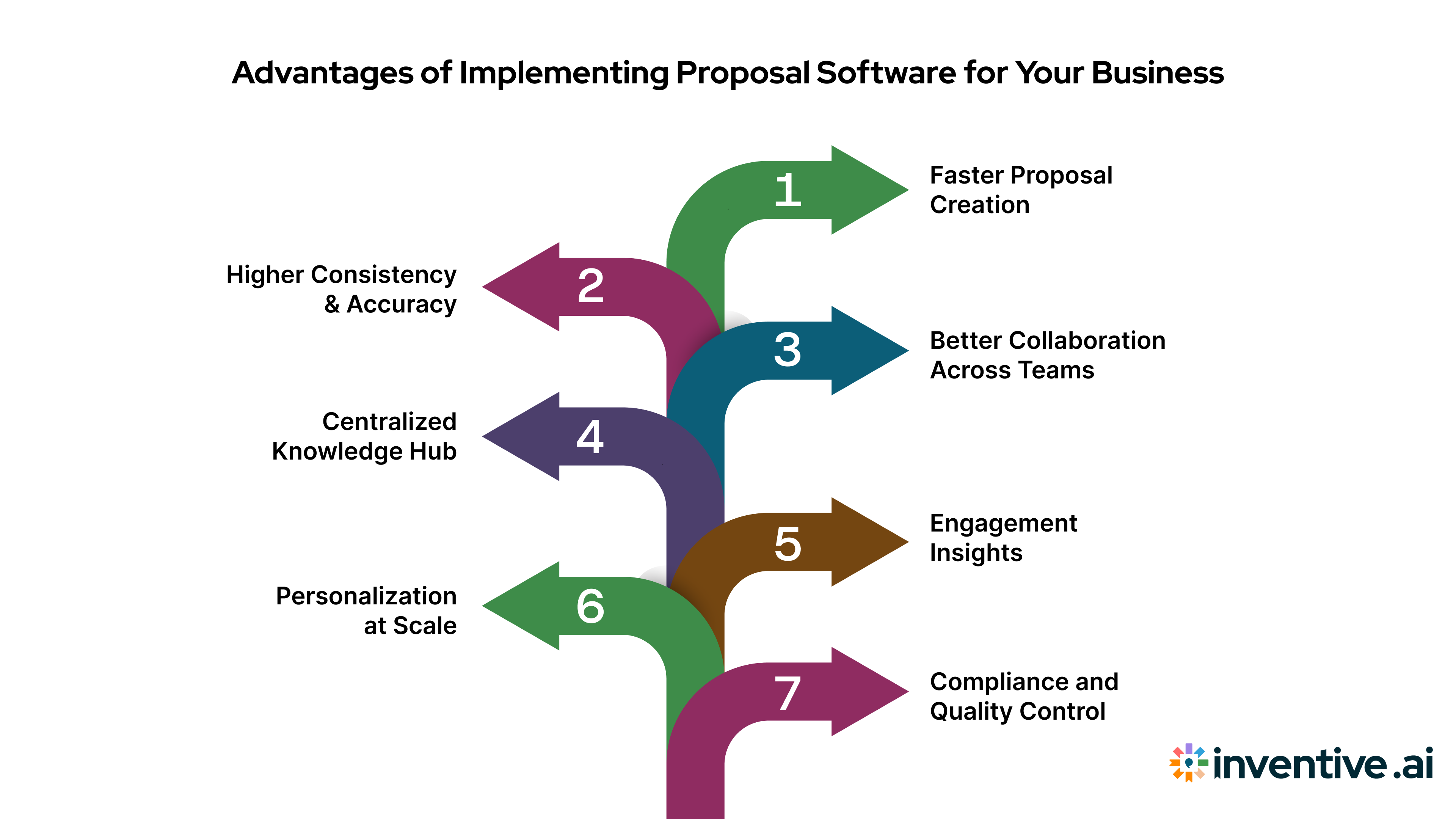
1. Faster Proposal Creation
Drafting proposals can be a slow, tedious process, especially when you’re starting from scratch every time. With proposal software, you get access to pre-built templates and content libraries that allow your team to fill in the blanks quickly. This means faster proposal turnaround and more time for your team to focus on strategic activities like customizing responses to better meet a client’s specific needs.
2. Higher Consistency & Accuracy
Inconsistent proposals can lead to confusion and, ultimately, lost deals. When you’re pulling content from a centralized library, you ensure that every response is aligned with your brand’s voice, technical details, and the latest information. No more second-guessing or scrambling to verify data, it’s all in one place and accurate.
3. Better Collaboration Across Teams
Proposal processes often require input from various teams, sales, solutions, and subject-matter experts. Without the right tool, collaboration can quickly turn into a logistical nightmare of emails and document versions. Proposal software brings everyone into the same platform, enabling your team to work together seamlessly in real-time, without missing a beat.
4. Centralized Knowledge Hub
Searching for content in multiple drives, emails, and folders takes time and causes frustration. Proposal software stores everything you need in one place, past proposals, responses, technical documents, FAQs, and security questionnaires, making it easier for your team to find the right content quickly. Plus, it’s all searchable, so you never waste time digging through documents again.
5. Engagement Insights
Some proposal tools go beyond just creating proposals, they offer analytics that show how prospects engage with your documents. You’ll know when a prospect opens your proposal, which sections they spend the most time on, and how they interact with the content. This invaluable data lets you tailor your follow-up strategy, targeting the most relevant areas and addressing any concerns upfront.
6. Personalization at Scale
Sending the same generic proposal to every client isn’t going to cut it. With proposal software, you can quickly customize each proposal to match the specific needs and pain points of the client you’re targeting. This allows for personalization at scale, helping you engage buyers more effectively, build stronger relationships, and increase your chances of closing the deal.
7. Compliance and Quality Control
For companies in regulated industries, proposal compliance can be a headache. Proposal software helps reduce the risk of using outdated content or missing critical compliance details. The system can flag outdated responses and ensure that your proposals meet all necessary regulatory requirements, especially important when dealing with contracts that involve sensitive data or legal terms.
When you adopt the right proposal software, you’re not just making incremental improvements, you’re fundamentally improving how your team works and how you show up to prospects.
Top 10 Proposal Software and Tools for 2025
Inventive AI

Inventive AI stands at the forefront of proposal software, offering features like hyper-contextual insights and real-time draft generation that set the standard in the industry. Designed for teams handling large volumes of complex proposals, Inventive AI offers unmatched automation, content management, and AI-driven accuracy that no other platform can match.
If you want to win proposals faster, smarter, and more consistently, this is the platform you need.
Key Features:
- 2x Usable Answers with Minor Tweaks: Quickly customize AI-generated drafts with minimal effort.
- Best in Industry for Customization: Fully tailored responses based on your company’s voice and client needs.
- Only Platform That Answers Value Statements: Goes beyond facts and specs to create compelling proposals that align with buyer value.
- Centralized Knowledge Hub: Store and access past responses and content seamlessly.
- Win Themes: Identify and fill content gaps, integrating data from multiple sources (Slack, calls, emails) to strengthen proposals.
Pros:
- Fast Draft Generation: Create a complete proposal draft in a fraction of the time.
- Centralized Knowledge Hub: Easily access and reuse past content for consistency and relevance.
- Increased Win Rates: Data shows that teams using Inventive AI have a 50% higher win rate.
Cons:
- Limited Analytics: While it excels in drafting and content management, Inventive AI’s analytics capabilities are somewhat limited compared to other platforms.
Best For:
- Large enterprise teams handling high volumes of RFPs and proposals.
- Teams need strong AI content management and customization.
- Businesses in regulated industries requiring fast, accurate proposals.
- Proposal teams are looking to drastically cut response times and improve proposal quality.
Gartner Rating: 5/5
Inventive AI is consistently rated as a leader in AI-driven proposal software, with high scores in speed, accuracy, and ease of use.
Proposify
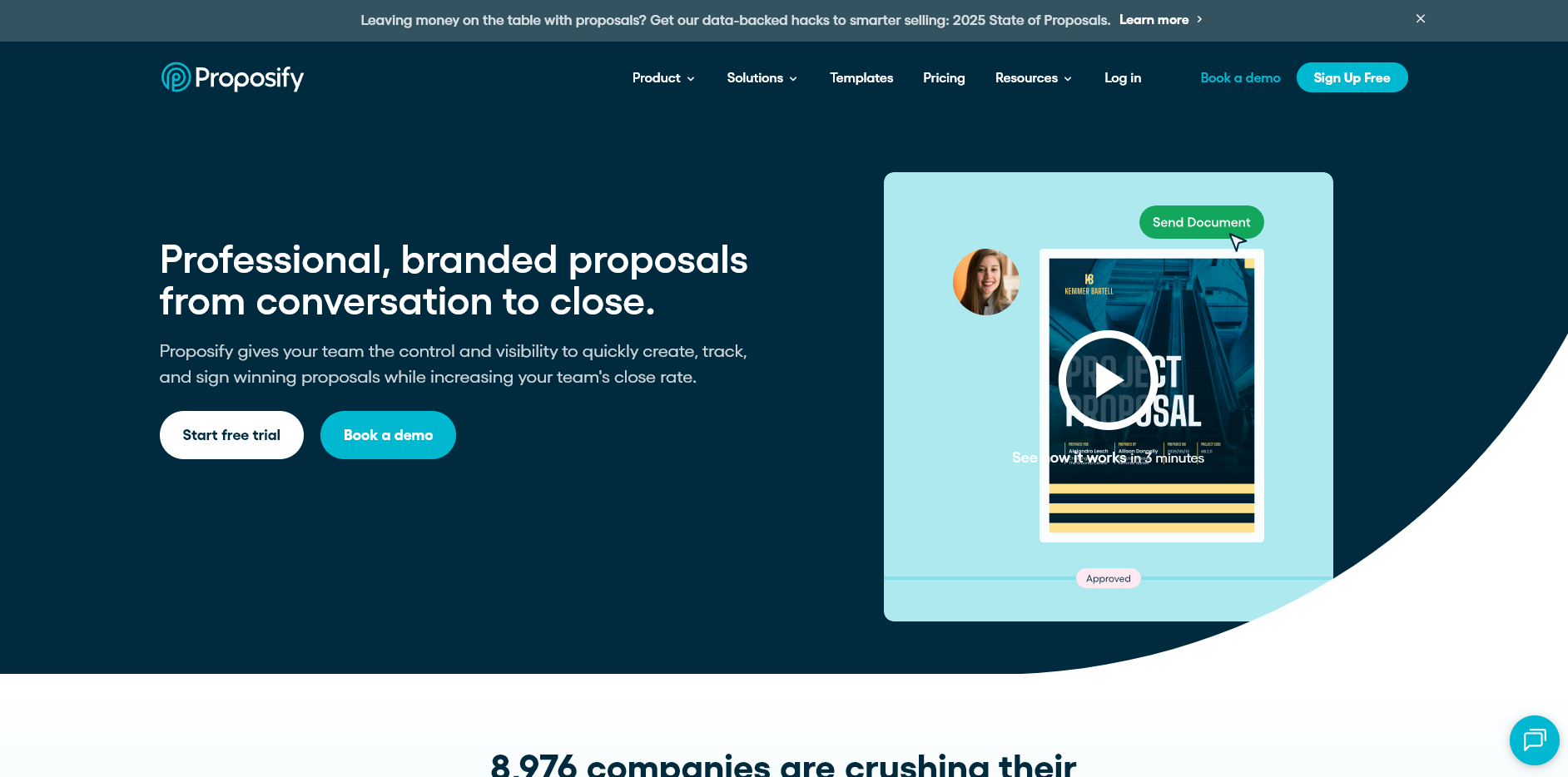
Proposify offers a solid, user-friendly proposal creation tool with a strong emphasis on design and ease of use. It’s ideal for teams that need to generate visually appealing proposals quickly, but it lacks some of the advanced AI-driven features of other platforms.
Features:
- Drag-and-drop editor
- Proposal tracking
- Client-facing templates
Pros:
- Easy to use: No steep learning curve for new users.
- Great for visual proposals: Strong design and customization options.
Cons:
- Limited automation: Lacks the depth of automation that Inventive AI offers, making it slower to draft complex proposals.
- No AI-powered content generation: While it’s strong for design, it doesn't help with generating content.
- Struggles with contextual awareness: Proposals can lack the depth and context that come with real-time AI insights.
Gartner Rating: 4.2/5
Rated as a strong performer, but lacking the next-level AI capabilities of leading solutions like Inventive AI.
Loopio
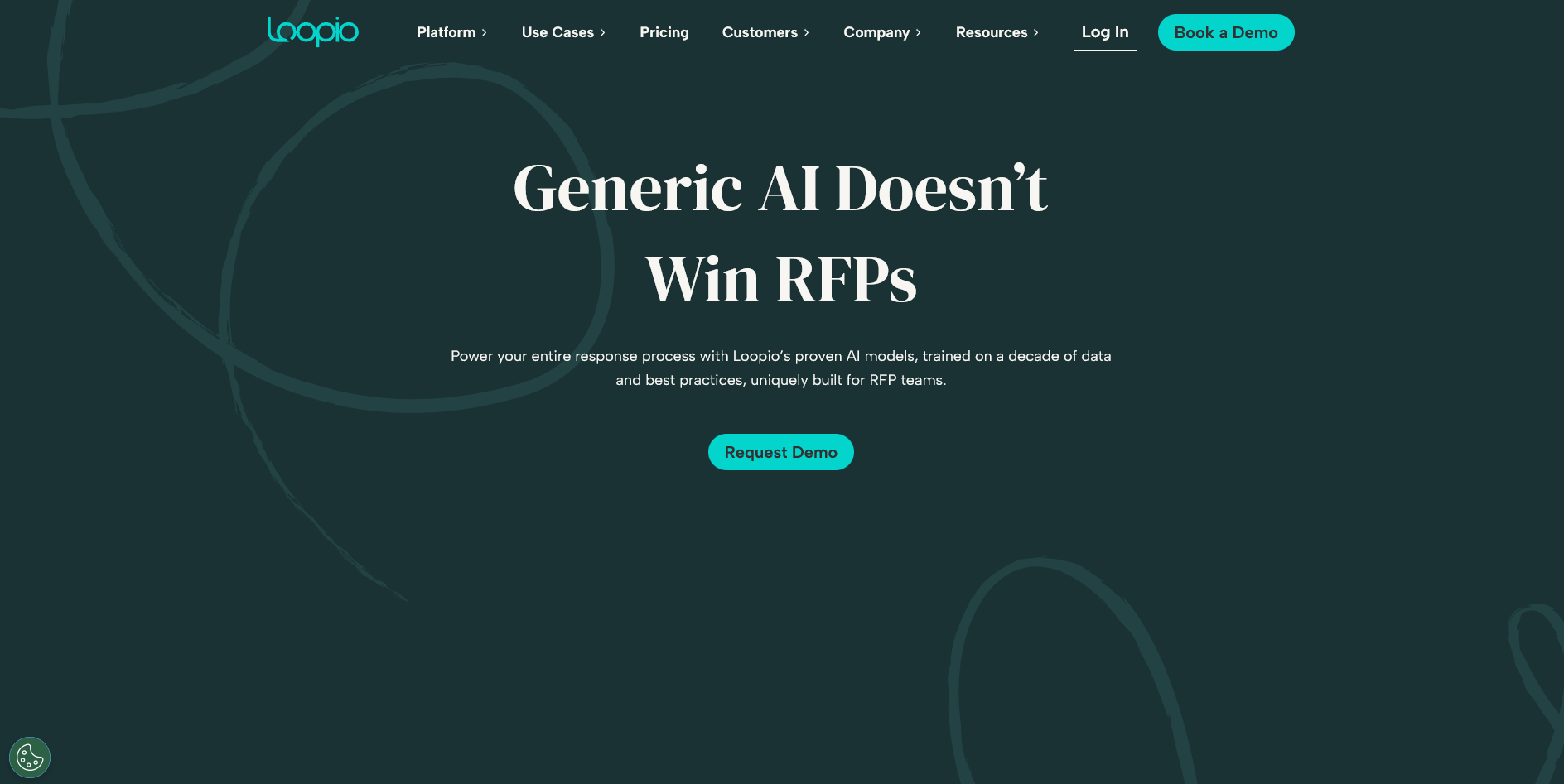
Loopio specializes in RFP management with a strong focus on streamlining the response process. It’s a solid choice for businesses handling large-scale RFPs, but its manual response generation limits efficiency compared to AI-driven platforms.
Features:
- RFP content library
- Team collaboration tools
- Customizable response templates
Pros:
- Great for large teams: Easy collaboration and access to shared content.
- RFP-focused: Excellent tool for businesses managing many RFPs.
Cons:
- Lacks AI integration: Doesn’t offer automated draft generation, which leads to more manual effort in drafting.
- Difficult to scale: As your business grows, Loopio struggles with managing larger volumes of complex proposals.
- Inconsistent proposal quality: Without automation and contextual AI, some proposals might fall short in terms of alignment and personalization.
Gartner Rating: 4.4/5
Rated as a leader in RFP management, but missing out on AI-driven efficiency for more dynamic, scalable needs.
Suggested Alternative: Inventive AI
While Loopio focuses on RFP content libraries, Inventive AI delivers intelligent proposal generation, real-time customization and AI-powered content management, drastically reducing manual work and improving proposal quality.
Qwilr

Qwilr stands out for its visually engaging, interactive proposals, offering a sleek, web-based approach to creating proposals that look like websites. However, it lacks the AI-powered features needed for fast, high-quality proposal generation at scale.
Features:
- Interactive proposal pages
- Customizable templates
- Real-time proposal tracking
Pros:
- Beautiful design: Great for visually appealing proposals that engage clients.
- Good for client-facing presentations: Strong visual and interactive elements.
Cons:
- Lacks automation: Doesn’t have AI-powered drafting or content generation like Inventive AI.
- Limited proposal customization: While it’s great for design, it doesn’t offer the deep customization Inventive AI provides.
- Not ideal for large teams: Lacks the scalability and collaboration tools necessary for teams working on high-volume proposals.
Gartner Rating: N/A
Rated as highly effective for design, but lacks the AI-driven automation that elevates Inventive AI to a leadership position.
Responsive

Responsive is a flexible, easy-to-use proposal management tool that offers templates and custom branding. It’s good for smaller teams but lacks the AI-driven features that make proposals faster and smarter.
Features:
- Custom branding
- Proposal templates
- Real-time collaboration
Pros:
- Simple to use: Good for teams just starting to streamline their proposal process.
- Affordable: A budget-friendly option for small businesses.
Cons:
- Limited AI capabilities: It doesn’t offer AI-powered drafting or contextual insights for smarter proposals.
- Struggles with complex proposals: Doesn't scale well for larger, more complex proposal processes.
- Inconsistent formatting: The platform lacks precision and consistency in proposal formatting.
Gartner Rating: 4.3/5
A good rated solution for small teams, but falls short for larger enterprises that need more advanced automation and AI-driven capabilities.
PandaDoc

PandaDoc offers solid document creation and e-signature features, but it doesn’t have the deep RFP-specific capabilities and AI-powered assistance that platforms like Inventive AI provide.
Features:
- Document e-signatures
- Sales proposal templates
- Real-time analytics
Pros:
- Ease of use: Simple setup with a user-friendly interface.
- Good for contracts: E-signatures and document management are well-integrated.
Cons:
- Lacks RFP-specific features: Not designed for handling large volumes of RFPs or highly complex proposals.
- Limited AI: Doesn’t offer AI-driven content generation or advanced customization.
- Basic proposal features: Falls short on advanced automation and content management.
Gartner Rating: 3.8/5
A strong performer for document management, but lacks the AI capabilities required for high-quality proposal automation at scale.
Autogen AI

Autogen AI is an AI-powered proposal and bid writing platform designed to help businesses generate faster, more accurate responses to complex proposals and government bids. While it excels in its specialized bid-writing capabilities, it lacks the comprehensive features and scalability needed for full-scale RFP management.
Features:
- AI-powered draft generation
- Integrates with major platforms like Salesforce
- Multi-format document import
Pros:
- Strong AI capabilities: Great for quickly generating complex proposal drafts.
- High compliance standards: Especially useful for government bids with security credentials like FedRAMP and CMMC.
Cons:
- Lacks full RFP lifecycle management: Missing key stages like RFP intake, scoring, and full team collaboration tools.
- Limited customization: The platform doesn’t offer the same level of customization as more flexible tools.
- Requires custom quotes: Pricing isn’t transparent and often depends on your specific business needs.
Gartner Rating: N/A
Autogen AI is a good fit for businesses focused on generating fast, compliant bids, but for broader RFP management and AI-driven customization, it may fall short.
Arphie
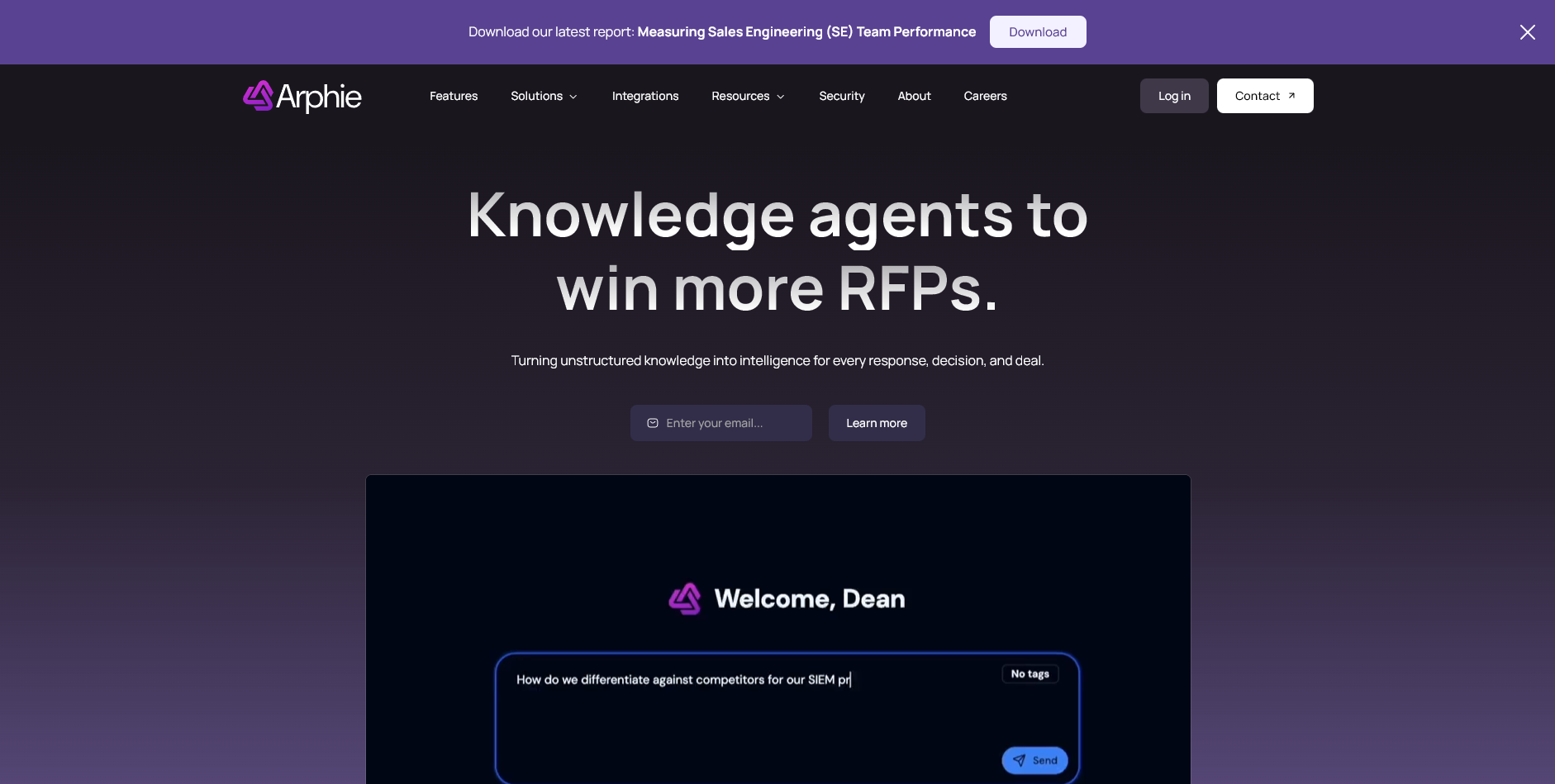
Arphie is an AI-powered proposal automation tool that integrates with internal data sources to automate the generation of RFP responses. It offers value for organizations seeking to streamline proposal content creation but lacks the advanced AI-driven insights and proposal automation found in platforms like Inventive AI.
Features:
- AI-powered content generation
- Integration with internal data sources (Google Drive, SharePoint)
- Customization of tone and style
Pros:
- Great for content accuracy: Pulls in data from internal sources, ensuring responses are current and relevant.
- Customizable responses: Allows you to adjust tone and style to match your company’s voice.
Cons:
- Limited scalability: Doesn’t handle high-volume proposals as efficiently as some enterprise-focused tools.
- No real-time AI insights: Lacks the deeper AI context and analysis that many platforms usually provide.
- Setup complexity: Requires significant configuration to integrate with other tools and workflows.
Gartner Rating: 5/5
Arphie is useful for teams focused on content accuracy, but businesses needing a more scalable, AI-driven solution for complex RFPs may find its capabilities lacking.
Sifthub
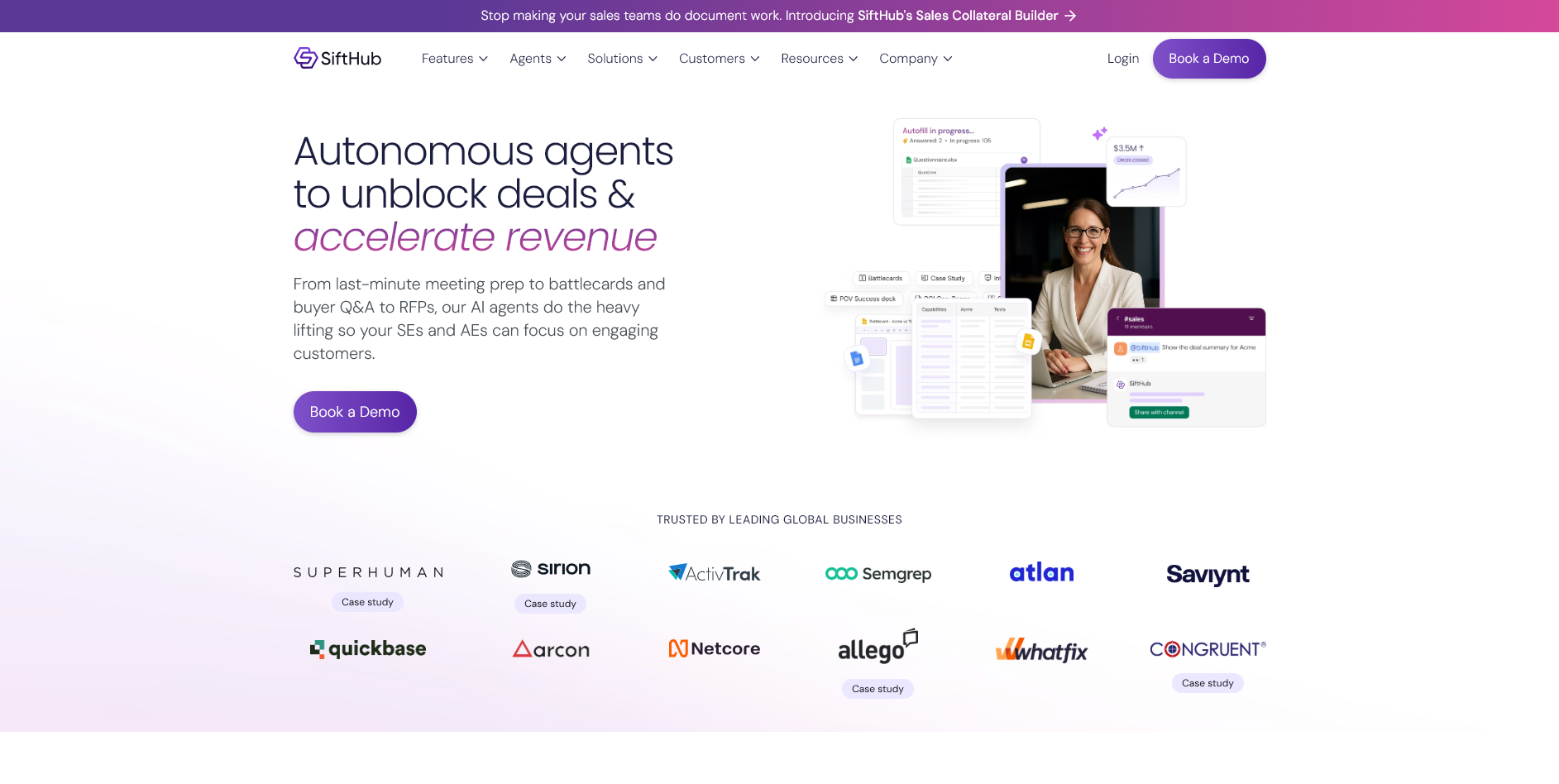
Sifthub is an AI-powered platform that supports proposal automation, bid management, and collaboration across sales and solutions teams. It’s effective for teams that need centralized content and quick proposal generation, but it doesn’t offer the in-depth customization or AI-driven insights that larger enterprises need.
Features:
- AI-powered content generation
- Centralized knowledge base
- Collaboration tools for teams
Pros:
- Strong content automation: Pulls from your internal content library to draft proposals efficiently.
- Team collaboration: Facilitates smooth workflows between sales, solutions, and proposal teams.
Cons:
- Lacks advanced analytics: It doesn’t provide deep insights into proposal performance or engagement tracking.
- Limited scalability: May not be ideal for large enterprises handling high volumes of proposals.
- Basic proposal features: Doesn’t offer the level of proposal customization or AI-driven content management that larger teams need.
Gartner Rating: N/A
Sifthub is a solid tool for small to mid-sized teams, but enterprises needing a highly scalable, AI-driven solution should look elsewhere.
Suggested Alternative: Inventive AI
Unlike Sifthub, Inventive AI offers end-to-end RFP automation, powerful AI-driven insights, and real-time content optimization, enabling faster, more accurate proposals with a higher win rate.
Tribble
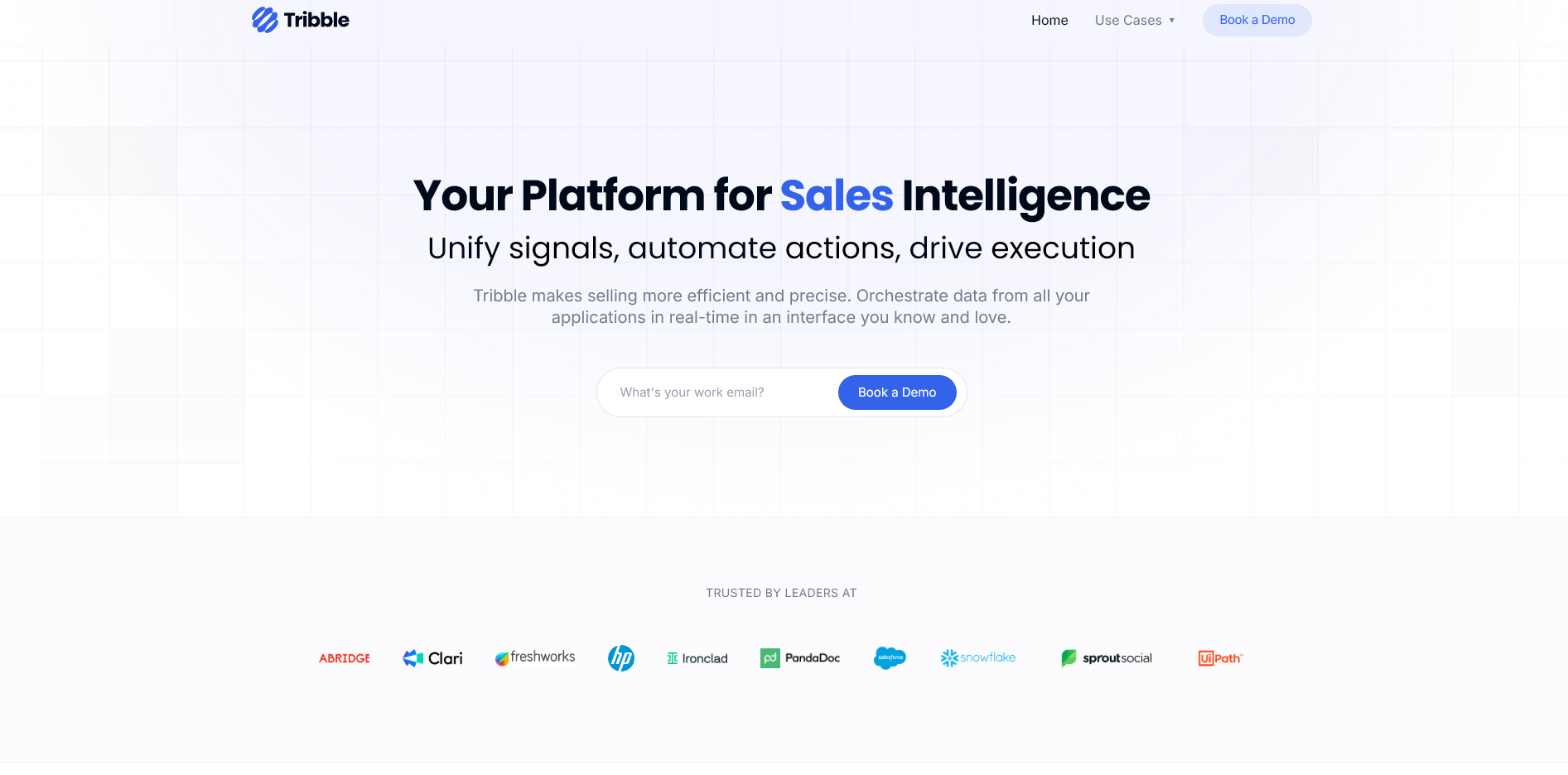
Tribble offers an AI-based service model rather than a traditional software platform, focusing on end-to-end proposal automation. Tribble handles everything from RFP intake to submission but may fall short on customization and scalability compared to more traditional SaaS proposal software.
Features:
- End-to-end proposal automation
- Real-time content generation
- AI agent for bid and proposal writing
Pros:
- Quick deployment: Minimal training or onboarding required, making it easy for teams to get started.
- Scalable proposal generation: Handles large volumes of proposals quickly, ideal for businesses with high proposal demands.
Cons:
- Limited control: As a service-based platform, it offers less customization and flexibility than software platforms like Inventive AI.
- Lacks analytics: Doesn’t provide detailed performance analytics or engagement tracking.
- Higher reliance on service model: Users are dependent on Tribble’s service and may lack the self-service capabilities of a traditional software platform.
Gartner Rating: N/A
Tribble is a great option for teams that need high-speed, volume-driven proposal generation but may not suit businesses requiring full control and deep analytics.
When it comes to proposal software, Inventive AI stands head and shoulders above the competition, offering unmatched AI-driven automation, customization, and centralized content management. While other tools offer basic features or are strong in certain areas, Inventive AI provides the full package, helping your team draft proposals faster, smarter, and more accurately, ultimately boosting your win rates.
How to Choose the Best Proposal Software for Your Business
Choosing the right proposal software goes beyond picking the one with the most features. It's about finding the tool that truly fits your team’s needs and helps them work more efficiently while increasing your win rate. Here’s what to look for when evaluating proposal software for your business:
- Ease of Use: The software should be intuitive and easy for your team to adopt without needing extensive training or constant support.
- Template Flexibility: You need customisable templates that allow you to tailor each proposal to your brand and the buyer’s expectations.
- Collaboration Tools: Look for features that enable multiple people to contribute, edit in real time, and maintain version control, this keeps everyone on the same page.
- Analytics & Tracking: A good proposal software should give you insights into how prospects engage with your proposals, such as which sections they open and how much time they spend on each.
- Integrations: Make sure the software integrates seamlessly with your CRM, cloud storage (like Google Drive or SharePoint), and communication tools to avoid siloed workflows.
- Content Library & Knowledge Hub: The ability to easily store, search, and reuse past proposals, responses, and documents will save time and reduce the risk of using outdated content.
- Automation & AI Assistance: Automated features like draft generation and pre‑filling of content based on past responses can drastically speed up your process and improve accuracy.
- Compliance/Security: If your business deals with sensitive data or operates in regulated industries, ensure the software has strong security features like audit trails and access controls.
- Scalability & Pricing: As your business grows, your proposal software should be able to scale with you, look for flexible pricing and options that allow for adding more users as needed.
- Support & Onboarding: Look for software that comes with strong customer support, training resources, and helpful guides to make the transition as smooth as possible for your team.
If a proposal tool checks most of these boxes, you’re positioned to improve efficiency, consistency and win rates. Don’t let fancy names blind you, make sure the practical features match your team’s daily workflow.
Also Read: Guide to Creating Custom RFP Templates
Challenges Faced by Businesses That Don’t Use Proposal Software
If you’re still managing proposals with manual processes, whether it’s Word documents, emails back and forth, or hunting down files, you’re likely feeling the weight of inefficiency. Here are the challenges your business might be facing, and how you can solve them with the right proposal software.]

1. Time-Draining Manual Processes
Writing proposals from scratch, formatting documents, and searching for the right content wastes valuable time each week.
Proposal software with pre-built templates and content libraries allows you to draft responses quickly, saving time and ensuring consistency across proposals.
2. Inconsistent Proposal Quality
Without a standardized process, every proposal could look different, weakening your brand consistency and message.
By using standardized templates and automated review workflows, you can ensure that every proposal is on-brand, accurate, and high-quality, no matter who’s drafting it.
3. Collaboration Bottlenecks
When multiple team members are involved, emails, file versions, and feedback loops can slow things down and create confusion.
A centralized platform where your team can collaborate in real time eliminates bottlenecks. Everyone works from the same document, reducing delays and miscommunication.
4. Fragmented Content
Your valuable proposal content might be scattered across old drives, individual laptops, and emails, making it hard to find when you need it.
A centralized knowledge repository that stores all your past proposals, responses, and related content in one searchable location ensures that you can access and reuse the right materials instantly.
5. Risk of Errors
Using outdated content, missing compliance details, or providing the wrong information can damage your credibility and jeopardize your chances of winning the deal.
Proposal software with automated content management flags outdated or conflicting content and ensures your documents are reviewed for compliance and accuracy before submission.
6. Slow Turnaround Time
A manual proposal process means you’re slower to respond, and prospects often favor vendors who provide quick and accurate proposals.
Tools that automate content generation, streamline formatting, and integrate with your CRM system significantly reduce response time, helping you get proposals out faster and increasing your chances of winning.
7. Low Visibility on Proposal Performance
Without tracking how your prospects engage with your proposals, you can’t know which sections are working or where they’re losing interest.
Proposal software with built-in analytics lets you track interactions, providing valuable insights into which parts of your proposals resonate most with clients, so you can improve future submissions.
If you’re still relying on manual processes for proposal management, you’re leaving productivity, consistency, and potential win rates on the table. By adopting the right proposal software, you’ll remove these obstacles and free up your team to focus on high-value, strategic work that drives business growth.
Why Inventive AI Is the Best Fit for Your Proposal Needs
When your business responds to RFPs, RFIs or complex sales proposals involving solutions, integrations and multiple stakeholders, you need more than a template tool, you need a full platform built for efficiency, accuracy, and winning. That’s where Inventive AI comes in.
- 10× Faster drafts: Inventive AI generates your first full draft by pulling from your knowledge sources, cutting down the time it takes to respond.
- 0 % Hallucinate: The system is designed to avoid AI-generated misinformation, ensuring your responses maintain high quality and accuracy.
- 66 % higher response quality: By aligning with your brand’s content and making every answer relevant, Inventive AI significantly raises the quality of your proposals.
- 95 % accuracy: With a centralized knowledge hub and content manager flags for outdated material, Inventive AI ensures that every proposal stays on point, accurate, and up to date.
- 50 % higher win rate: When your responses are faster, smarter and more consistent, you significantly improve your chances of closing deals.
- Centralized knowledge hub: Upload previous RFPs, integrate with your drives or SharePoint, and give your team easy access to a single, reliable source of truth.
- AI Content Manager: Inventive AI automatically flags outdated or conflicting content, so you’re never relying on stale responses. This ensures that every proposal is current and relevant.
- Win Themes: This feature identifies gaps in your proposals and pulls in relevant information from platforms like Slack, email, and calls to strengthen your submissions.
- End‑to‑end RFP Automation: From intake to drafting to submission, Inventive AI streamlines the entire process, making it ideal for vendors handling large volumes of complex RFPs.
Inventive AI is designed to empower your team, cut down response time, and deliver high-quality proposals that increase your win rate.
Frequently Asked Questions (FAQs)
1. What exactly is proposal software?
It’s a tool that helps you create, manage and send business proposals (including RFP responses), combining templates, content libraries, collaboration and analytics so you’re faster and more consistent.
2. How does AI‑powered proposal software help with RFP responses?
AI tools can pull relevant content from your past responses, fill in standard sections automatically, flag outdated data, and help you draft faster so you spend less time on manual work and more time refining your best ideas.
3. Is proposal software only for large companies?
Not at all. Many tools offer entry‑level pricing and scale up. Even smaller teams using proposal software benefit from faster turnaround, better consistency, and fewer mistakes.
4. Which features matter most when choosing proposal software?
Ease of use, templates/customisation, collaboration, analytics/tracking, integration with your tech stack, content library, scalability and security are key features to evaluate.
5. How much time can I realistically save by using proposal software?
According to recent research, teams using RFP/response software dropped average writing time to about 25 hours per response, down from 30 hours. loopio.com With the right software and processes you can reduce even more, especially for high‑volume or repeat formats.


